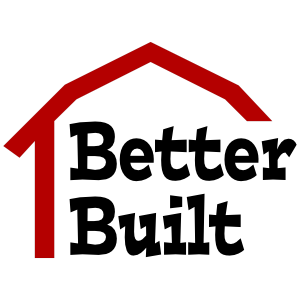Rent to Own Storage Buildings
Rent to own storage buildings are one of most recent additions to the self-storage industry. It is no hidden secret that in a capitalistic society where we all accumulate clutter (some useful, some junk), as the world becomes more populated, and new homes are constructed on smaller lots with less room to expand storage – there is a great demand for storage space.
Unfortunately, month-to-month rental facilities have a tendency to require a down deposit before you can even put anything inside it. They also come with a lot of rules and stipulations as to what you can and cannot store within the unit. In addition, they may pose a security concern (without surrounding fence, gate and/or surveillance cameras) and can raise their rates whenever they so desire. “Don’t like it and get out” – that’s their motto. If you leave, more than likely someone will inherit your old unit within a week or two.
On the other hand, individuals who need a storage space might shop for a shelter they can put on their own personal property. In the long run it will save you money compared to renting. However, the upfront costs will be high. Plus you need to allocate time to construct the unit if the structure is shipped to you in parts or you build from scratch.
Therefore, rent to own storage buildings are becoming more feasible. As the name implies, rent to own is a fairly straightforward process: you start out renting the unit and eventually own it. You sign a lease and agree to make it a rental for X number of months. (NOTE: the length of the contract varies largely on the company you deal with. The most traditional length is 6 to 12 months). You pay the standard rate for the rental plus whatever you can afford to pay extra per month. Once the lease is up, all that money you contributed additionally during the terms of the rental now goes toward your purchase of the storage shed.
Rent to own storage buildings are not just limited to commercial lots. In fact, more and more agreements are being made between a manufacturer and homeowner, where the manufacturer is willing to install the structure on your own personal property so long as you do not break the lease.
Does it sound like something you may want to consider? Here are some tips for rent to own storage buildings that will require housing expensive and/or larger objects:
- Always check with the lender to make sure there are not any stipulations that could jeopardize the rent to own agreement later. For example, if you plan to store a lot of flammable items inside you will need to make sure the lender is okay with hazardous materials being stored.
- Check with insurance and see how that will be handled while the lease is still in the rent stage of the agreement. A lot of companies will accept limited-to-no liability if someone was to break into your storage shed and steal items. The same could be true of natural disasters such as a tornado, hurricane, earthquake, wildfire, etc. If your items will not be protected by the company, will your homeowner’s insurance cover it?
- Another insurance concern is if you are using the structure for commercial purposes. For example, do you own a landscape business and the structure will serve as storage and a shop for your company? Worker’s compensation and other insurance questions are noteworthy when you have employees operating under its roof.





